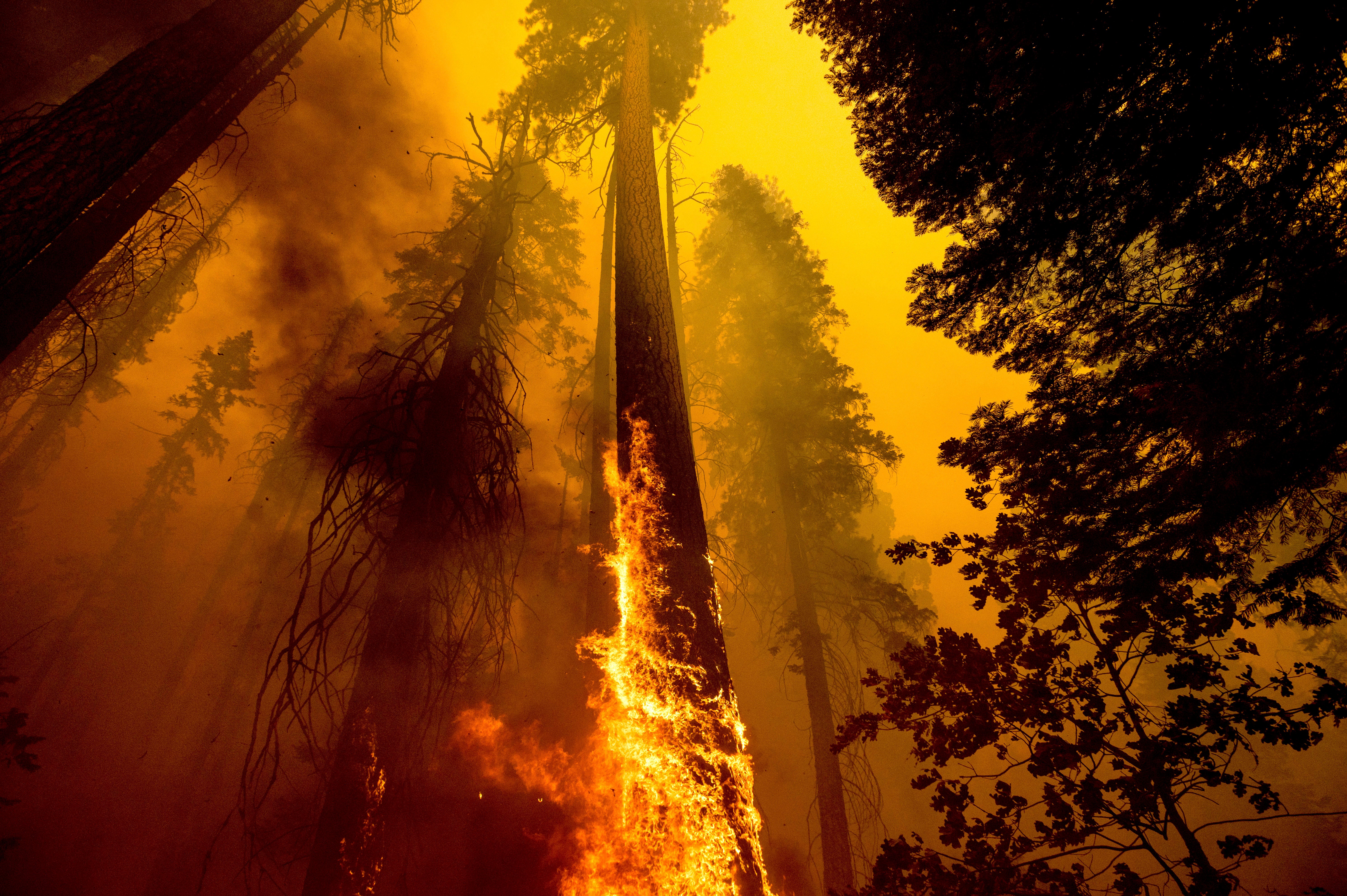California fires may have killed hundreds of giant sequoias
Authorities say Northern California wildfires may have killed hundreds of giant sequoias, although it may take months to fully assess the damage

Your support helps us to tell the story
From reproductive rights to climate change to Big Tech, The Independent is on the ground when the story is developing. Whether it's investigating the financials of Elon Musk's pro-Trump PAC or producing our latest documentary, 'The A Word', which shines a light on the American women fighting for reproductive rights, we know how important it is to parse out the facts from the messaging.
At such a critical moment in US history, we need reporters on the ground. Your donation allows us to keep sending journalists to speak to both sides of the story.
The Independent is trusted by Americans across the entire political spectrum. And unlike many other quality news outlets, we choose not to lock Americans out of our reporting and analysis with paywalls. We believe quality journalism should be available to everyone, paid for by those who can afford it.
Your support makes all the difference.Northern California wildfires may have killed hundreds of giant sequoias as they swept through groves of the majestic monarchs in the Sierra Nevada an official said Wednesday.
“It's heartbreaking," said Christy Brigham, head of resource management and science for Sequoia and Kings Canyon national parks.
The lightning-caused KNP Complex that erupted on Sept. 9 has burned into 15 giant sequoia groves in the park, Brigham said.
Most saw low- to medium-intensity fire behavior that the sequoias have evolved to survive, Brigham said.
However, it appeared that two groves — including one with 5,000 trees — were seared by high-intensity fire that can send up 100-foot (30-meter) flames capable of burning the canopies of the towering trees.
That leaves the monarchs at risk of going up “like a horrible Roman candle," Brigham said.
Two burned trees fell in Giant Forest, which is home to about 2,000 sequoias, including the General Sherman Tree, which is considered the world’s largest by volume. However, the most notable trees survived and Brigham said the grove appeared to be mostly intact.
Firefighters have taken extraordinary measures to protect the sequoias by wrapping fire-resistant material around the bases of some giants, raking and clearing vegetation around them, installing sprinklers and dousing some with water or fire retardant gel.
However, the full extent of the damage won't be known for months, Brigham said. Firefighters are still occupied protecting trees, homes and lives or can't safely reach steep, remote groves that lack roads or even trails, she said.
The KNP Complex was only 11% contained Thursday after burning 134 square miles (347 square kilometers) of forest. Cooler weather has helped slow the flames and the area could see some slight rain on Friday, forecasters said.
To the south, the Windy Fire had burned at least 74 sequoias, Garrett Dickman told the Los Angeles Times. The wildfire botanist has recorded damage as part of a sequoia task force preparing and assessing trees in the fire zone.
In one grove, Dickman counted 29 sequoias that were “just incinerated,” he told CNN.
“There were four of those that had burned so hot that they’d fallen over,” he said.
The 152-acre (395-square-kilometer) fire was 75% contained.
Giant sequoias grow naturally only in the Sierra Nevada. The world’s most massive trees, they can soar to more than 250 feet (76 meters) with trunks 20 feet (6 meters) in diameter and live for thousands of years.
The trees need low-intensity fire to reproduce. Flames thin out the forest of competitors such as cedars, clearing away shade, and the heat causes the seedlings to open. But fire officials say recent blazes have been much more intense because fire suppression efforts left more undergrowth that's turned bone dry from drought, driven by climate change.
Last year’s Castle Fire in and around Sequoia National Park is estimated to have killed as many as 10,600 giant sequoias, or 10% to 14% of the entire population.
While some groves may have received only patchy fire damage and will recover, every burned giant sequoia is a loss, Brigham said.
“When you stand by a tree that big and that old, 1,000 to 2,000 years old, the loss of any is a heartbreak,” she said. “You can’t get it back, it’s irreplaceable.”
California fires have burned more than 3,000 square miles (7,800 square kilometers) so far in 2021, destroying more than 3,000 homes, commercial properties and other structures. Hotter and drier weather coupled with decades of fire suppression have contributed to an increase in the number of acres burned by wildfires, fire scientists say. And the problem is exacerbated by a more than 20-year Western megadrought that studies link to human-caused climate change.